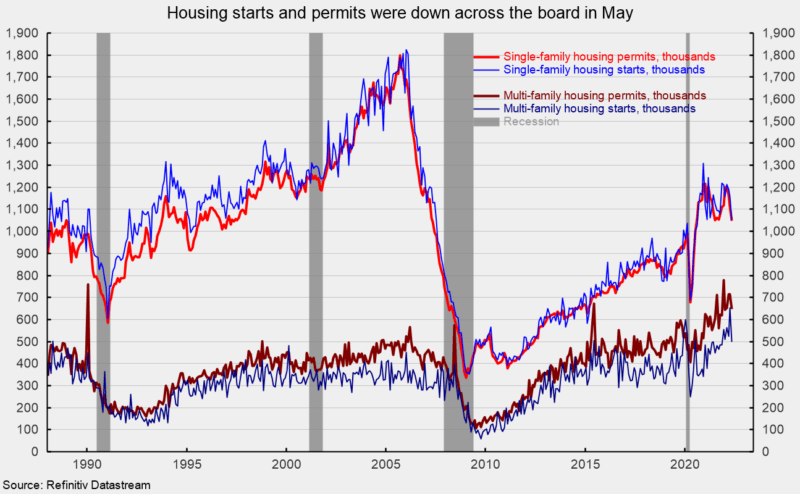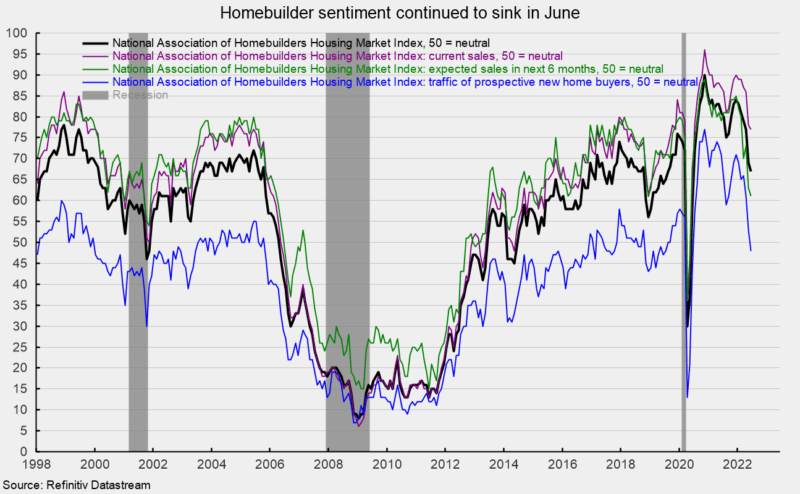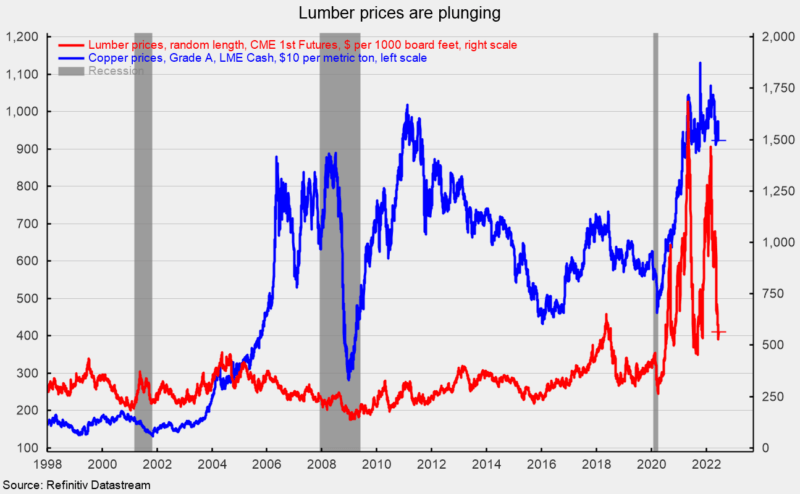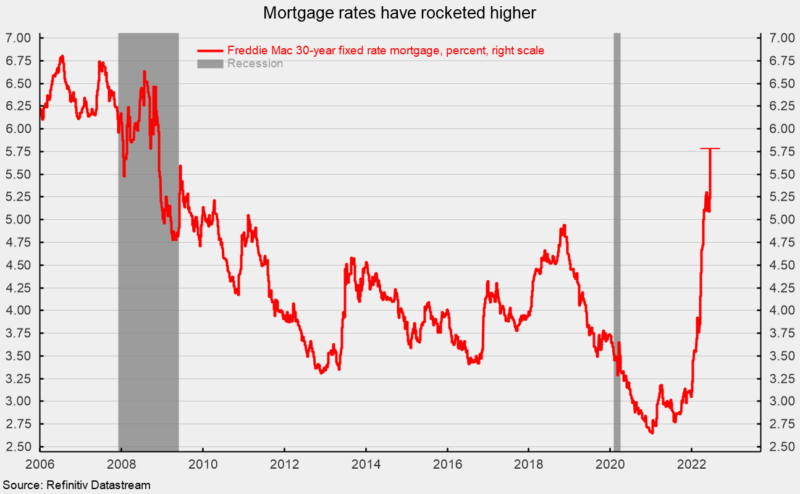Home Construction Falls Again in May
Total housing starts fell to a 1.549 million annual rate in May from a 1.810 million pace in April, a 14.4 percent plunge. From a year ago, total starts are down 3.3 percent. Total housing permits also fell in May, posting a 7.0 percent drop to 1.695 million versus 1.823 million in April. Total permits are still up 0.2 percent from the May 2021 level.
Starts in the dominant single-family segment posted a rate of 1.051 million in May versus 1.157 million in April, a drop of 9.2 percent and are down 5.3 percent from a year ago (see first chart). Single-family permits fell 5.5 percent to 1.048 million versus 1.109 million in April (see first chart).
Starts of multifamily structures with five or more units decreased 26.8 percent to 469,000 and are off 3.3 percent over the past year while starts for the two- to four-family-unit segment jumped 141.7 percent to a 29,000-unit pace versus 12,000 in April. Combined, multifamily starts were off 23.7 percent to 498,000 in May and show a gain of 0.6 percent from a year ago (see first chart).
Multifamily permits for the 5-or-more group fell 10.0 percent to 592,000 while permits for the two-to-four-unit category decreased 1.8 percent to 55,000. Combined, multifamily permits were 647,000, off 9.4 percent for the month but up 17.0 percent from a year ago (see first chart).
Meanwhile, the National Association of Home Builders’ Housing Market Index, a measure of homebuilder sentiment, fell again in June, coming in at 67 versus 69 in May. That is the sixth consecutive drop and the lowest reading since June 2020. The index is down sharply from recent highs of 84 in December 2021 and 90 in November 2020. Rising mortgage rates, elevated home prices, and declining consumer sentiment are weakening demand while higher input costs, except for lumber, are a major concern for builders (see second chart).
All three components of the Housing Market Index fell again in May. The expected single-family sales index dropped to 61 from 63 in the prior month, the current single-family sales index was down to 77 from 78 in May, and the traffic of prospective buyers index plunged again, hitting 48 from 53 in the prior month (see second chart).
Input costs are still a concern for builders though lumber prices have declined sharply recently. Lumber recently traded around $560 per 1,000 board feet in mid-June, down from peaks around $1,700 in May 2021 and $1,500 in early March 2022. Other input materials such as copper were down slightly but still elevated with copper at $9,200 per metric ton (see third chart). The high input costs will continue to pressure profits at builders.
Mortgage rates have rocketed higher recently, with the rate on a 30-year fixed rate mortgage coming in at 5.25 percent in mid-June, nearly double the lows in early 2021 (see fourth chart).
While the implementation of permanent remote working arrangements for some employees may have been providing continued support for housing demand, record-high home prices combined with the surge in mortgage rates and falling consumer attitudes are working to weaken demand. Pressure on housing demand combined with elevated input costs is sending homebuilder sentiment plunging. The outlook for housing is deteriorating rapidly.









